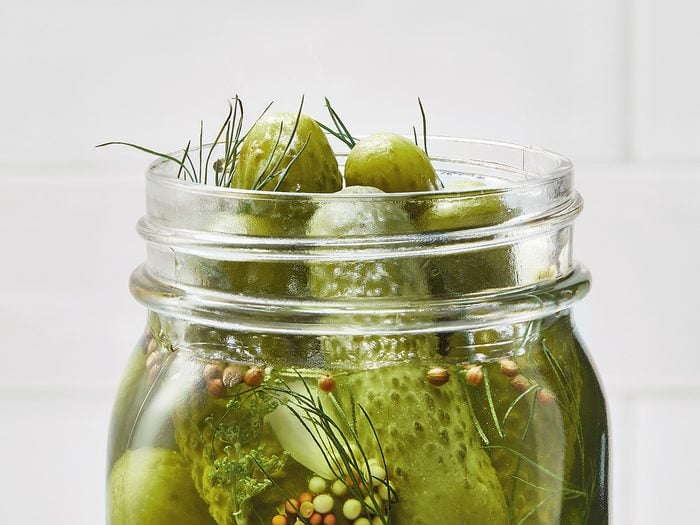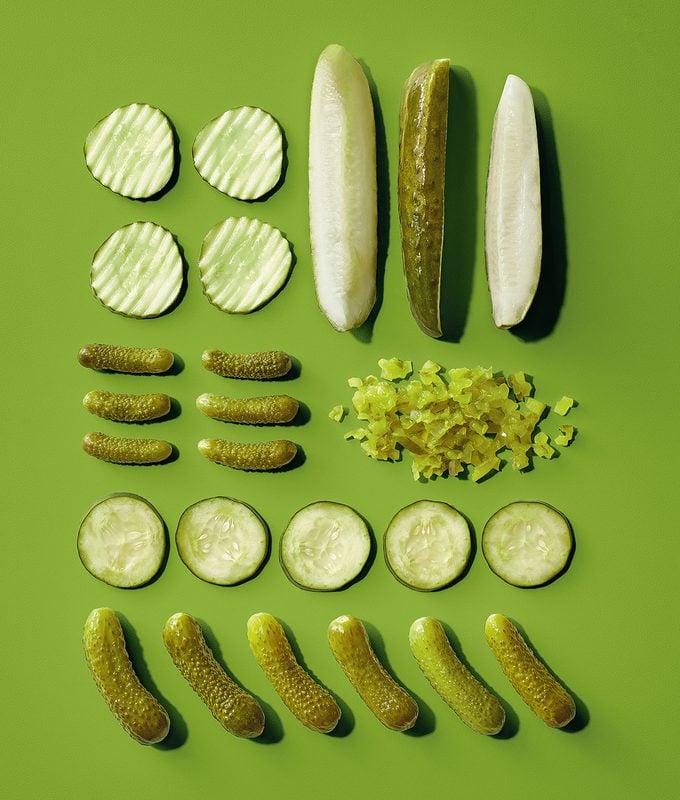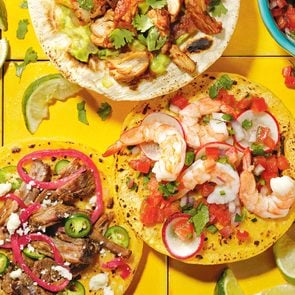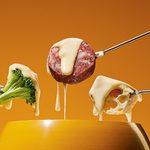The Dill-icious History of Pickles

From kosher pickles to kimchi to pickled herring, there's a lot of goodness packed into this tangy snack.
In the early 17th century’s The Tempest, William Shakespeare had King Alonso ask the court jester, “How camest thou in this pickle?” You could say we’d all be in a pickle without the delightfully pungent and tangy food.
Today, you’ll run into pickles at every turn. Among the array of over-the-top offerings at fairs across Canada, including the Canadian National Exhibition in Toronto, the Pacific National Exhibition in Vancouver and the ever-popular Calgary Stampede, are pickle-flavoured cotton candy, pickle fries, pickle pizza and pickle lemonade. And the most common food-delivery request in eight Canadian cities, according to a 2021 Uber Eats survey? “Extra pickles, please.”
Pickle mania is nothing new. Thousands of years ago, ancient Mesopotamians in modern-day Syria, Turkey and Iraq enjoyed cucumbers preserved in vinegar, brought from their native India. But the first mention of pickled vegetables made in salt brine comes 4,500 years before then, from an ancient Chinese manuscript more than 9,000 years old, writes Jan Davison in Pickles: A Global History. The staying power of preserved pickles made them perfect for the long, cold winters of European countries like Germany, Hungary and Poland, where they remain a staple.
Pickling involves soaking a food in a solution, usually vinegar or salted water (brine), to keep bacteria at bay—often with spices like garlic, dill, cloves and mustard seeds, which are not only flavourful but antimicrobial, too.

Around the world, many foods are pickled. Sauerkraut and kimchi are both fermented and pickled cabbage, while pickled herring is popular in Scandinavia. In India, you’ll find spicy pickled unripe mango. From lemons to pork hocks, okra to hard-boiled eggs, someone, somewhere, has pickled it.
Christopher Columbus typically packed pickled cucumbers (try saying that fast!) for long voyages, and the trip to the Americas in the late 15th century was no exception. Not only did pickles keep for months, but since cucumbers are an excellent source of vitamin C, they also helped prevent scurvy. Columbus acquired his pickles from Amerigo Vespucci, an Italian wheeler-dealer who sold supplies to seafarers, and, yes, for whom the United States of America was named. (Though Vespucci didn’t “discover” America any more than Columbus did, early map-makers incorrectly thought he did.)
Today, the two most common varieties of pickled cucumbers in North America are kosher pickles, brined with garlic, dill and spices—first brought to New York City by Jewish immigrants in the 19th century—and so-called bread-and-butter pickles, sweet thanks to brown sugar or syrup in the brine.
We have the founder of Heinz to thank for this popularity. At the 1893 Chicago World’s Fair, Henry J. Heinz tempted fairgoers with a “free gift” of a pickle pin if they visited his booth. It worked, attracting massive crowds.
Heinz had the market cornered until the ’70s, when another American company, Vlasic, made ads featuring a stork who delivered pickles instead of babies.
Perhaps a daily pickle would do us all good, especially the fermented type, such as kimchi, since it is a source of probiotics and supports gut health.
So, in the manner of Shakespeare, take note of this idiom: Either you love pickles or you’re wrong.
Next, read all about how poutine became a classic Canadian favourite.






